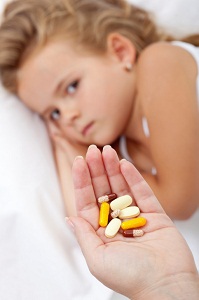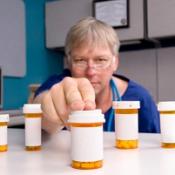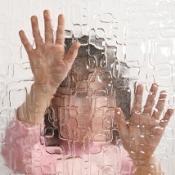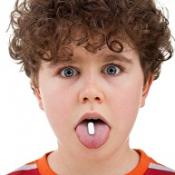 The newly revised Diagnostic and Statistical Manual of Mental Disorders (DSM-V), the all-important guidebook used to identify and diagnose a wide variety of psychological issues, is the product of nearly two decades of deliberation among mental health professionals. And yet, some insist, they still couldn’t get it right.
The newly revised Diagnostic and Statistical Manual of Mental Disorders (DSM-V), the all-important guidebook used to identify and diagnose a wide variety of psychological issues, is the product of nearly two decades of deliberation among mental health professionals. And yet, some insist, they still couldn’t get it right.
Predictably, many therapists are not pleased with the results. Among the most controversial changes to the DSM are the elimination of Asperger’s syndrome—it is now part of a broader diagnostic category known as autism spectrum— and the addition of disruptive mood dysregulation disorder, a label that could apply to children who display what some consider “normal” behavioral issues.
While access to care and insurance coverage may increase for DSM additions such as binge eating and hoarding, concerns abound that the latest amendments will lead to the over-diagnosis and over-medication of certain issues.
GoodTherapy.org asked some of its Topic Experts for their thoughts about the DSM-V, how it will influence their field, and whether it will affect their practices going forward. Here’s what they had to say:
- Sarah Noel (person centered/Rogerian): “I am concerned about the removal of the bereavement exception within the diagnostic criteria for major depressive disorder. There is no more certain part of life than death. Experiencing the intolerable anguish of the death of a loved one might look like depression, but it is not. It is a very normal and appropriate response to this experience, and pathologizing it seems to border on irresponsible. … On a more positive note, I am quite pleased to see efforts being made to use more sensitive language when it comes to the diagnosis used for some in the transgender community. The change from gender identity disorder to gender dysphoria seems to be a more accurate representation of the pain and discomfort that one can feel when there is a mismatch in the physical body and the internal gender identification. I think this change also creates an important opportunity to be very clear that this is not a diagnosis that can be applied to everyone in the transgender community—only to people who are experiencing distress at the incongruence. It is a clear acknowledgment that simply being transgendered is not pathological. While this was also true of GID, the change to gender dysphoria opens the door for this important clarification.”
- Erik Young (Asperger’s/autism): “Overall, I think the changes will be positive. Particularly the addition of hoarding and the child emotional dysregulation diagnosis. With the changes in autism, my feelings are mixed. I understand the thinking behind lumping these various ‘flavors’ of autism into one category. However, I am concerned that children might be excluded from a diagnosis and thus not receive necessary services. In some of my research, it’s been noted that there is now a provision for taking into account history as part of the autism diagnosis, so I think a lot of how who qualifies for a diagnosis will depend on how the professional community uses these guidelines. My attitude at this point is wait and see. On the one hand, having one category (autism spectrum disorder) simplifies matters. On the other hand, we lose some of the variability that is inherently part of autism. Personally, I see some fundamental differences between my higher functioning clients and my lower functioning clients … differences that go beyond cognitive ability. I really feel that language (and one’s use of language) really impacts how one relates to, makes sense of, and interacts with the world. We might be losing that distinction under the new diagnostic criteria. However, from a practical perspective, it is not going to change how I provide treatment for my clients. Time will tell.”
- Daniel Goldin (addictions and compulsions): “I support dropping Asperger’s syndrome as a separate diagnosis and incorporating it into the more general autism spectrum disorder. It is simply inaccurate to consider Asperger’s separately from the broad dimension of autism, and such categorical thinking encourages the over-diagnosis of Asperger’s syndrome. Currently, almost any highly intelligent, troubled child, especially one who uses his natural ability to intellectualize as a defense, becomes a candidate for an Asperger’s diagnosis, which can stigmatize a child and press parents to view the child in a rigid way. Hopefully, clinicians will less readily label smart, troubled kids as ‘autism spectrum’ unless such children have clear autistic spectrum symptoms and do not evince qualities such as empathy and psychological mindedness, often ignored in the diagnosis of Asperger’s, which suggest that they are not within the autistic dimension.”
- Lynn Somerstein (object relations): “Disruptive mood dysregulation disorder, or DMDD, refers to children who have recurrent temper tantrums. I am very reluctant to consider this a diagnostic category at all. Children exhibit a vast spectrum of behaviors, which is a normal part of growing up.”
- Jeremy Frank (drug and alcohol addiction): “I’m excited for the new diagnoses and definitions for addiction and the substance use disorders. Charles O’Brien at the University of Pennsylvania, who headed up that task force, did an amazing job integrating the disparate views and philosophies of those who treat addiction. The new classification places the disease of addiction on a more natural and logical continuum from abuse to dependence, which may make it much easier for therapists to discuss the components of addiction with clients. The new emphasis on ‘craving,’ which wasn’t a part of the older diagnoses, makes sense because clients struggling with all sorts of addictive behaviors, including the more behavioral and process addictions like food addiction, gambling, Internet gaming, and sex and love addiction (the latter of which didn’t make it into this version of the DSM) have central to their diagnosis an element of craving, which can now be considered as part of the larger gestalt for this mental issue. Many of us in the addictive field experience clients and patients on a daily basis discussing the extent of their cravings, which can be so strong that they can think of nothing else at all; nothing matters except satisfying the desire of that craving. The new classification helps us better understand this issue as a biological, psychological and social brain disease.”
- Janeen Herskovitz (Asperger’s/autism): “Even as an ‘expert’ on the topic of autism, I am left with more questions than answers. For the time being, we have little choice but to keep an open mind and a wait-and-see approach. Then, like most things in the life of a parent in the world of autism, fight like hell when our kids aren’t getting what they need.”
- Deb Hirschhorn (relationships and marriage): “By acting like some ‘disease’ process is taking control of people’s minds, people are being disempowered, a very bad thing. It’s the creation of dependency and the rewarding of the psychiatric profession and the pharmaceutical industry. … When a child is considered bipolar—and the new (diagnosis of disruptive mood dysregulation) is an ‘almost bipolar’—it gives the parents the relief of an immediate ‘answer.’ This, in turn, keeps the parents from much introspection and (perhaps worse) keeps the community from much investigation of the child’s environment and the parent’s parenting styles. All small children will resort to crying and tantrums. At a certain point (generally the age of acquisition of language), smart parents say, ‘Use your words,’ and start helping the child develop self-control. Parents who are too afraid of their children for this step end up with out-of-control children.”
- Andrea Schneider (learning difficulties): “From what I know of the changes regarding dropping Asperger’s, my main concern would be that children who manifest the symptomatology of Asperger’s continue to receive special education services under this new, broader umbrella of autism spectrum disorder. Having a code of mild/moderate/severe hopefully will help. Each child with autism looks completely different, so one child could have very minor impairments in functioning and look like a ‘typical’ kid, whereas other children may have very severe symptoms, including no social skills and severe speech delays. My concern (as a mother with a special needs child) is that special education consider the subtle and not-so-subtle differences in children’s functioning and place children in appropriate special education settings (i.e., severely autistic children need to be in a classroom specific for their needs, whereas a child with mild symptoms—like strands of sensory challenges—who is currently diagnosed with pervasive developmental disorder-not otherwise specified and looks ‘typical’ should be in a classroom with other youngsters who exhibit mild impairments so that her/his social skills can blossom and develop.”
- Lisa M. Vallejos (existential psychotherapy): “I can’t tell you how many times I have had sessions with clients who believe there is something wrong with them because they are having a perfectly normal and perfectly human reaction to life’s tragedies. Often, they are seeking a quick fix to alleviate their pain. I am really saddened at how our society—and not just in the realm of mental health—has worked to make being human undesirable.”
What do you think about the DSM changes? What would you change? Do you agree with our Topic Experts?
© Copyright 2012 GoodTherapy.org. All rights reserved.
The preceding article was solely written by the author named above. Any views and opinions expressed are not necessarily shared by GoodTherapy.org. Questions or concerns about the preceding article can be directed to the author or posted as a comment below.

 Dependent Nation: How the DSM-V Perpetuates the Issues It Describes
Dependent Nation: How the DSM-V Perpetuates the Issues It Describes Autism Spectrum and the DSM-V: More Questions Than Answers
Autism Spectrum and the DSM-V: More Questions Than Answers The Human Disorder: DSM-V Fraught with Danger
The Human Disorder: DSM-V Fraught with Danger